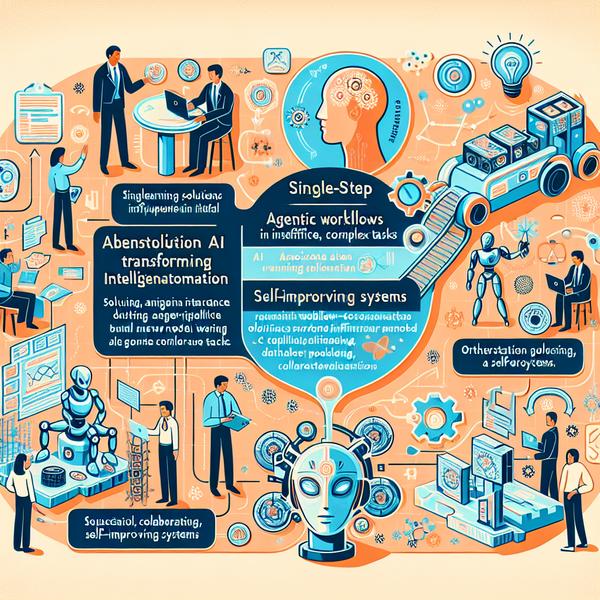
AI technology is evolving rapidly, and in 2025, the concept of agentic workflows is transforming intelligent automation. Simply relying on single-step AI solutions is no longer sufficient for handling complex tasks. Instead, a new model that involves orchestration, collaboration, and self-improvement is gaining traction. These workflows allow AI systems to adapt, learn, and work together seamlessly for robust and scalable results, covering methods like sequential intelligence, parallel processing, intelligent routing, and self-improving systems.
The Need for Agentic AI Workflows
- Traditional AI workflows, often relying on single models for solving multi-step problems, fail because they lack the ability to adapt or collaborate. Imagine trying to bake a cake without following multiple recipes and steps—it’s bound to fail.
- This is where agentic AI workflows shine. They break tasks into manageable chunks, allowing AI to perform each step sequentially or even simultaneously. For instance, a customer support chatbot can now understand the user's issue step-by-step and provide layered solutions.
- By 2028, Gartner predicts that 33% of enterprise software will depend on these orchestrated workflows, replacing static AI models.
- The system adapts like a team of workers building a skyscraper. Each worker (or AI agent) has a designated task, from assembling materials to final decoration.
Step-by-Step Productivity with Sequential Intelligence
- Sequential intelligence is the backbone of many successful agentic workflows. It uses techniques like "Prompt Chaining." This strategy breaks large tasks into smaller steps, where each step feeds the next.
- Think of it as writing an essay: brainstorm ideas, outline sections, draft content, and edit—the result is high-quality work.
- "Plan and Execute" works similarly. The agent creates a plan, follows through, checks its work, and adjusts as needed. For instance, a financial AI agent could analyze stock trends and then suggest portfolio adjustments in a multi-step manner.
- This method ensures tasks aren’t just completed—they're done with precision and context. This allows AI systems to handle tasks like managing complex workflows in healthcare or supply industries.
Efficiency through Parallel Processing
- Parallel processing involves dividing tasks into smaller, independent sub-tasks that can be solved at the same time. It’s like preparing a family dinner where multiple dishes are cooked simultaneously.
- "Parallelization" excels in processes like A/B testing or code reviews, where multiple solutions need quick evaluation and synthesis.
- In systems like Retrieval-Augmented Generation (RAG), an "Orchestrator–Worker" model is used. The orchestrator delegates jobs to specialized agents, bringing back results for coherent analysis. This is similar to a project manager assigning specific tasks to team members with distinct expertise.
- By utilizing parallel processing, autonomous vehicles and multi-modal research can derive results more quickly without sacrificing depth or accuracy.
Smart Routing for Specialized Tasks
- Intelligent routing ensures workflows utilize specialized AI agents for given problems. Imagine walking into a hospital—receptionists, doctors, and surgeons each have unique roles. AI routing works similarly.
- Routing classifies inputs and assigns them to the most suitable agent, making multi-domain customer support or debating systems more effective.
- An "Evaluator–Optimizer" pattern refines this process further. It combines agents that propose solutions with others that evaluate and improve them, similar to an editor and writer duo finalizing a story.
- Dynamic routing ensures scalability, as seen in industries like finance, where various agents handle fraud detection, risk assessment, and customer queries simultaneously.
Adapting with Self-Improving Systems
- Self-improvement is at the core of advanced agentic AI systems. They don’t just finish a task but also learn from their results and adapt for better outcomes in the future.
- Methods like "Reflection" empower agents to review their performance after every cycle, akin to a sports coach reviewing game footage with their team.
- "REWOO" techniques fine-tune algorithms, reducing resource use and solving complex questions like deep searches or multi-step problem-solving in industries like legal and research fields.
- Finally, "Autonomous Workflows" work continuously to optimize themselves. For example, chatbots can refine their understanding of user intent with each conversation, reducing errors over time.